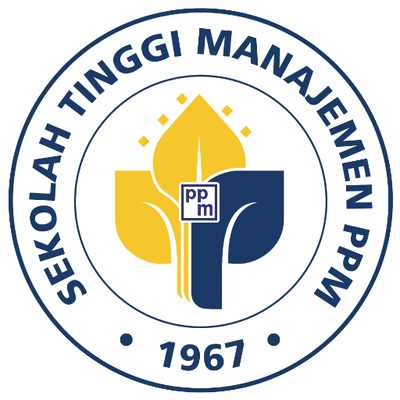ANALISIS STRATEGI BERSAING UKM BATIK SURAKARTA
Abstract
Full Text:
PDF (Bahasa Indonesia)References
Alarape AA. 2014. Developing the Entrepreneurial Orientation of OwnerManagers of Small and Medium Enterprises in Nigeria. Ife Center for Psychological Studies Nigeria. 22(1):218-231. http://hdl.handle.net/10520/EJC150774
Alimudin, Arasy. 2015. Strategi Pengembangan Minat Wirausaha Melalui Proses Pembelajaran. e-Jurnal Manajemen Kinerja. E-ISSN : 2407-7305
Barney, J B. 1991. Firm Resources and Sustained Competitive Advantage. Journal of Management, 17(1): 99-120.
Bucktowar, R., Kocak, A., & Padachi, K. 2015. Entrepreneurial Orientation, Market Orientation and Networking: Impact on Innovation and Firm Performance, Journal of Development Entrepreneurship, 20(4). https://doi.org/10.1142/S1084946715500247
Chavan, Meena. 2005. An appraisal of environmental management systems: A competitive advantage for small businesses. Management of Environmental Quality, Bradford. 16(51): 444
Coney, Heide,1985. Alliances in Industrial Purchasing: the Determinants of Joint Action in Buyer Supplier Relationship
Dean J.T., Robert L Brown and Charles E. Bamford. 1998. Between Trust and Control: Developing Confidence and Partner Cooperation in Alliances. Academy of Management Review, 5(1): 49-64
Gibbons, Patrick T, et al., 2003, Adaptability And Performance Effects Of Business Level Strategies: An Empirical Test, Irish Marketing Review, Vol. 16.
…………………...,Kementerian Koperasi dan Usaha Kecil dan Menengah Republik Indonesia, 2018, Statistik Koperasi dan Usaha Kecil Menengah, Jakarta.
Kamener, Dahliana. 2017. Faktor-faktor yang Mempengaruhi Kualitas Strategi Bersaing Industri UKM Bordiran/Sulaman di Kota Padang. Journal of Economic Education, 5(1): 90-105
Kuncoro, M. 2012. Strategi Bagaimana Meraih Keunggulan Kompetitif, Penerbit Erlangga, Jakarta
Wibowo Kuntjoroadi, Nurul Safitri. 2009. Analisis Strategi Bersaing Dalam Persaingan Usaha Penerbangan Komersial. Jurnal Bisnis dan Birokrasi, Administrasi dan Organisasi, 16(1): 45-52.
Lee, S.M. and Peterson, S.I. 2000. Culture, Entrepreneurial Orientation, and Global Competitiveness. Journal of World Business, 35(4): 401-416.
Lumpkin GT, Dess GG. 1996. Clarifying the Entrepreneurial Orientation Construct and Linking It to Performance. The Academy of Management Review. 21(1): 135-172.
Lumpkin GT, Dess G.G. 2001. Linking Two Dimensions of Entrepreneurial Orientation to Firm Performance: The Moderating Role of Environment and Industry Life Cycle. Journal of Business Venturing, 16: 429-451.
Malhotra Naresh K. 2009. Marketing Research: An Applied Orientation 4th ed. New Jersey. Pearson Education, Inc.
McGee, John dan Sammut-Bonnici, Tanya. 2014. Competitive Strategy. Wiley Encyclopedia of Management, edited by Professor Sir Cary L Cooper. Copyright © 2014 John Wiley & Sons, Ltd.
Miller, Danny dan Friesen, Peter H. 1982. Innovation in Conservative and Entrepreneurial Firm: Two Models of Strategic Momentum. Strategic Management Journal, 3 (1).
Miller, D. & Friesen, P. H. 1983. Strategy-Making and Environment: The Third Link. Strategic Management Journal, 4(3): 221-235.
Nwachukwu Chijioke, Chládková Helena, Žufan Pavel. 2017. The Relationship between Entrepreneurial Orientation, Entrepreneurial Competencies, Entrepreneurial Leadership, and Firm Performance: a Proposed Model. Business Trends. 7(1).
Primasari, Dona; Mutmainah, Isbandriyati. (2011), Pengaruh Informasi Akuntansi terhadap Kinerja Manajerial dengan Tiga Variabel Moderating (Studi Empiris pada BPR di Kabupaten Bogor), Jurnal Reviu Akuntansi dan Keuangan, 1(2).
Platin, Nida dan Ergun, Hande Sinem. 2017. The Relationship between Entrepreneurial Orientation and Performance; Evidence from Turkish SMEs. Business and Management Studies, 3(2). doi:10.11114/bms.v3i2.2408
Porter, Michael E.1985, Competitive Advantage: Creating and Sustaining Superior Performance, Macmillan, New York.
Purnama dan Setiawan. .2003. Analisis Pengaruh Sumber-sumber Keunggulan Bersaing Bidang Pemasaran terhadap Kinerja Perusahaan Manufacture di Indonesia. Jurnal Bisnis.
Rupidara, Neil. 2008. Modal Intelektual dan Strategi Pengembangan Organisasi dan Sumber Daya Manusia. Paper disajikan pada Diskusi Modal Intelektual UKSW. Salatiga, 21 February 2008.
Sitepu, Masliana Bangun. 2005. Mengatasi Berbagai Tantangan dalam Era Globalisasi melalui Peningkatan Perilaku Kewiraswastaan. Jurnal Ilmu Administrasi dan Organisasi, Bisnis & Birokrasi, 13(1).
Sugiyono. 2016, Metode Penelitian Bisnis, Alfabeta, Jakarta
Walter Achim, Auer Michael, Ritter Thomas. 2006. The Impact of Network Capabilities and Entrepreneurial Orientation on University Spin-off Performance. Journal of Business Venturing, 21: 541 – 567.
Wennekers, Sander, Van Stel Andre´, Thurik, Roy, dan Reynolds, Paul. 2005. Nascent Entrepreneurship and the Level of Economic Development. Small Business Economics, 24. DOI 10.1007/s11187-005-1994-8
Wiklund Johan, Shepherd Dean. 2003. Knowledgeâ€based Resources, Entrepreneurial Orientation, and the Performance of Small and Mediumâ€sized Businesses. Strategic Management Journal, 24(13): 1307-1314. doi: 10.1002/smj.360.
Winata, Felix Andhy dan Sugiarto, Miyasto, J. 2016. Pengaruh Kualitas Hubungan dan Kemampuan Adaptasi Terhadap Lingkungan yang Mempengaruhi Keunggulan Bersaing dan Implikasinya pada Kinerja Perusahaan (Studi pada PT. Aga Pratama). Jurnal Bisnis Strategi, Vol. 25 No. 1 Juli.
Zabadi, Ahmad; Mutmainah, Isbandriyati. 2012, Persepsi Pengrajin terhadap Identitas Produk pada Industri Kerajinan Kayu Anggota Koperasi Mitra Meubel Bojong Indah Klender Jakarta Timur, Jurnal Infokop, 20.
Zhang, X., Ma, X., & Wang, Y. 2012. Entrepreneurial orientation, social capital, and the internationalization of SMEs: Evidence from China. Thunderbird International Business Review, 54(2), 195-210.
Zulaikha, Fredianto, Ronie. 2003. Hubungan antara Lingkungan Eksternal, Orientasi Strategik dan Kinerja Perusahaan, Program Pascasarjana Universitas Diponegoro, Tidak dipublikasikan.
DOI: https://doi.org/10.34149/jmbr.v16i2.166
Indexing
JMBR Editorial Office: PPM School of Management, Jl. Menteng Raya 9-19 Jakarta 10340 Phone: 021-2300313 ext 2354

License
JMBR is using CC BY License
This work is licensed under a Creative Commons Attribution 4.0 International License.



















